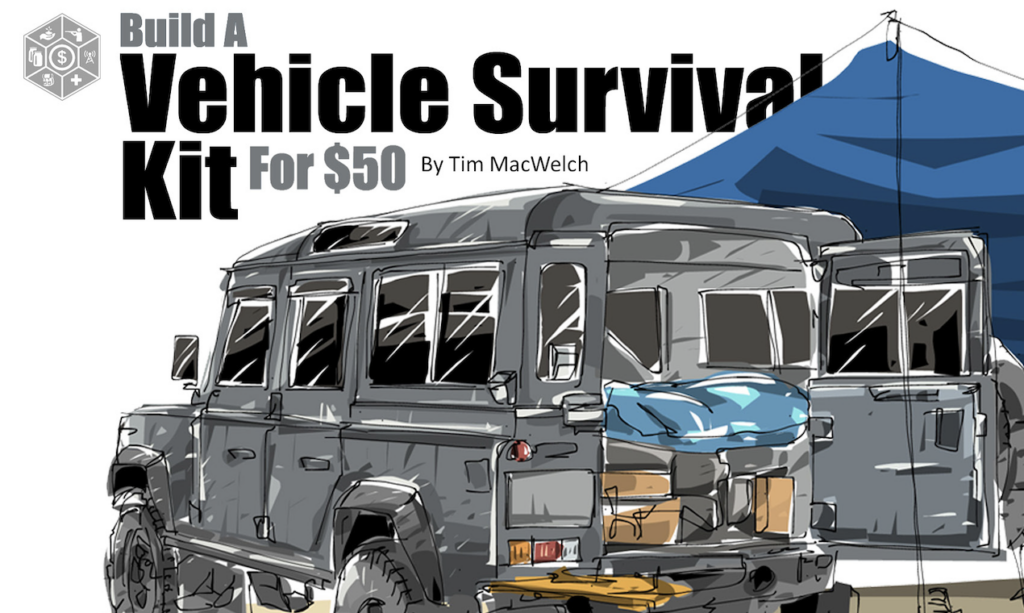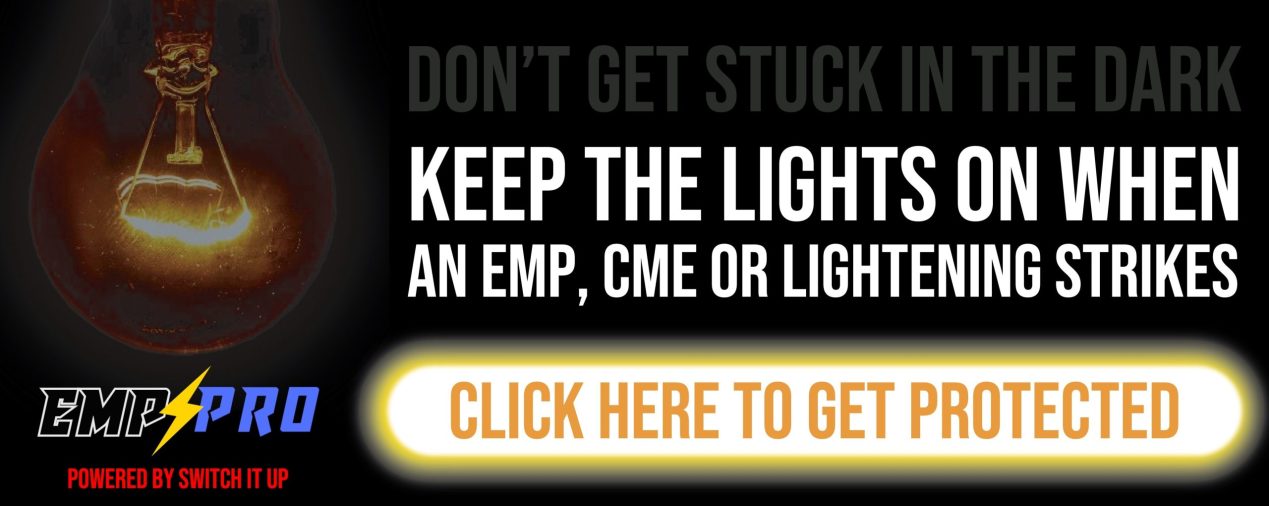Your EDC pocket gear and Bug Out Bag are great resources in any type of calamity, but if you’re serious enough to
have those in place – why not go one step further? Why not create a survival kit that never leaves your vehicle? We can all imagine scenarios where our regular gear may not be in the picture, or it may not be enough. But a little extra peace of mind can be had for a very low price if you thoughtfully build a vehicle survival kit and stay on budget. Here is a basic line of gear and supplies, which you can easily modify for your most likely needs and concerns.
BEGIN WITH THE BASICS
Survival can be very simple, once we strip it down to the basics. We all need shelter from the elements, safe water to drink, first aid when we are hurt, food to eat, and the ability to communicate and travel. Add in a few other things, like hygiene and self-defense, and our emergency needs are primarily covered.
SHELTER
Have at least one shelter item for each seat in your vehicle. These could be space blankets for $1 each. Weather protection could be beneficial as well, and cheap ponchos could serve that role. If you can catch a good deal on these, you could get 4 space blankets and 4 ponchos for just $8.
WATER
One gallon water jugs can also be had for $1 each at the grocery store. In the average climate, you could carry one gallon per seat in your vehicle. In hotter or drier conditions, consider two gallons per seat. Start with a minimum of 4 gallons, which can cost $4. And as a final thought, don’t store your water in a way that it can leak on the other supplies. If it leaks (and it will), it could ruin your other things.
FIRST AID
A basic $10 Walmart first aid kit may give you enough supplies to patch up the com- mon minor injuries you’d face in an emergency. And when your budget isn’t so tight in the future, improve the kit by adding trauma dressings and tourniquets.
FOOD
This can be whatever you like, so long as it doesn’t require cooking and can handle the weather. I prefer New Millennium food bars. These have a 5-year shelf life (when kept cool), they come in different flavors, they don’t melt in the heat, they’re 400 calories each, and you can eat them on the run. They are about $1.50 each, so ten will cost you $15.
EXTRAS
A survival whistle could be useful, and these can be cheap, and a flashlight can make a big difference at night. A $10 LED headlamp and a $3 survival whistle will spend the last of our $50 budget, but don’t worry – there are plenty of extra things we can toss in for free (like asking for free matchbooks at the quickie mart). Don’t forget a few sanity savers too. Pick something from your bookshelf and throw an old paperback book you liked in the kit, as something to pass the time (for free).
PRO TIP
The heat of your vehicle isn’t going to do your first aid kit medicines any favors. Many medicinal products break down in high temperatures, and your vehicle may exceed 130F regularly in the summer. Make sure you rotate pills and ointment packets annually in regions with hot summer weather.
CONSIDER YOUR CLOTHING
If you have chosen to build a vehicle survival kit because you commute a long way to work or you
travel a lot, think about the clothing and footwear you are typically wearing while logging those miles. Your business attire may look great in the office, but it may not perform great in a crisis. Those fancy shoes aren’t practical for walking the 20 miles a day to get home, and that business casual clothing isn’t suited for much fighting or bushwhacking. This facet of your vehicle kit won’t cost you a dime if you plan it right. Take a full set of clothing that you already have.
Choose garments that will not draw attention to you and some kind of footwear that can keep you going for miles and miles. This wardrobe should reflect the current season, and the worst weather you’d expect. Naturally, this set of clothes will need to change throughout the seasons of the year and keep up with weight loss or gain. Swap your clothing out each season, to match the appropriate weather. Those cargo shorts won’t help much in the dead of winter.
CONCEALMENT IS KEY
If there were a major crisis and your own family needed some supplies, would you even hesitate to break into a vehicle to take a military-looking backpack that is bulging at the seams? No, you wouldn’t waste a moment finding a rock to smash the car or truck window and grab that bag. No one else is going to pass it up either. I had a friend lose their BOB with $1000 worth of gear inside, and that was not in a time of crisis. Someone saw it in the back of the soft top Jeep, they quietly sliced through the clear plastic window and took the bag. So if you’re going to store anything of value in a vehicle, including survival supplies, consider the best ways to conceal it. On the average car, a locked trunk is more secure than the back seat. In a truck or SUV, you won’t have the luxury of a trunk.
Hiding in plain sight may be better. Put your kit in a box that will throw prowlers off the track. For example, when the next child’s birthday or holiday rolls around for your family – see if you can get a large empty toy box from a cheap toy. Not an expensive or cool toy packaging, just something large, cheap, and awful. Place your water jugs in the bottom, set your other supplies in a waterproof bag on top, close the box and slap a bow on it. If it’s the dollar store Chinese knock off of the Tiny Pony Super Jumbo Playset, no one will break into your vehicle to steal it. The box (and its con- tents) would have no perceived value in a crisis. One other container option is a beat-up old cooler. This can buffer some of the heat of the day, and it does somewhat conceal the kit (though a thirsty marauder may break into your truck to see if there are any drinks in that cooler). You could also “double up” to take advantage of both containers, using the temperature protective cooler inside the theft deterring awful toy box. At the end of the day, it doesn’t matter if your vehicle survival kit cost you $50 or $5,000. If it gets stolen, you’re still empty-handed, and a little deception can help to prevent that from happening.
DON’T FORGET TO ROTATE
Some of your supplies (like tools and clothing) are iron clad items that never go bad, capable of withstanding the baking heat of summer and the deep freeze of winter. Other things, however, are not so durable. Food and water should be rotated regularly. In very hot climates and summertime, swap out your water jugs once per month. Depending on your food choice, you may want to swap it out once per season. There’s no need to waste these resources. Eat the food and water your plants with the water jug. Just make sure you have more perishables in place BEFORE you take away the old stuff. That would be just a prepper’s luck – to normally carry useful stuff, but not have it on the very day you needed it.
This article was originally published in the Survival Dispatch Insider Vol 3, Issue 8.

